Advice
Tribute funds
A Tribute Fund is a place to commemorate a loved one’s life. It’s somewhere family and friends can share stories, photos...
This year, how about making a promise to yourself to try and experience something new in nature every month? In January’s Nature’s Calendar, you’ll find plenty of inspiration as we pick out some of the best things to see and do this month.
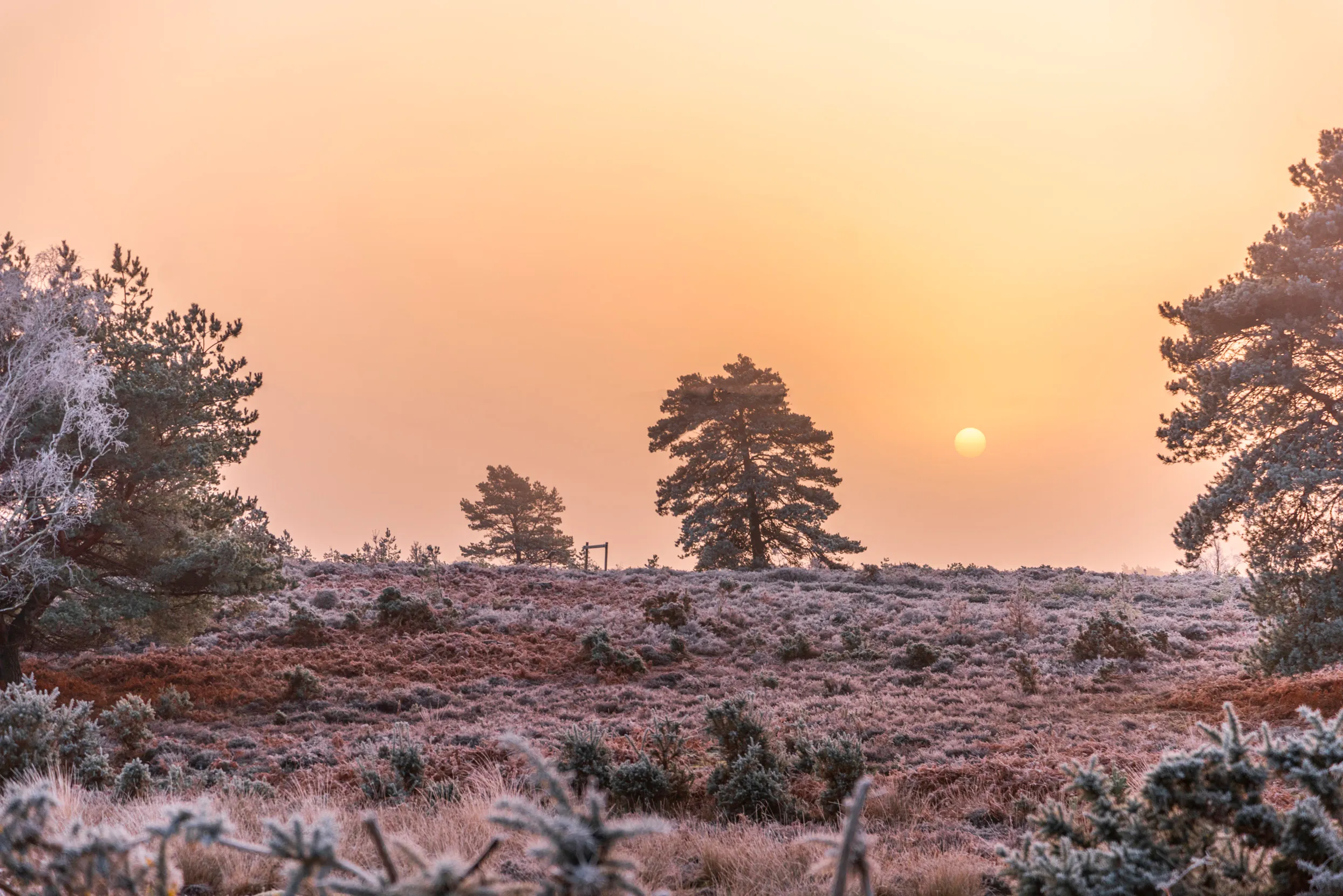
Winter is a good time to look out for woodland birds, as the lack of leaves on the trees can make them easier to see. With their speckly brown colouring, Treecreepers can be well camouflaged as they hop up the side of a tree looking for invertebrates to eat. It’s the movement that is likely to catch your eye as these are very active birds. They start near the bottom of a tree spiralling round as they go up, using their curved bills to find their food.
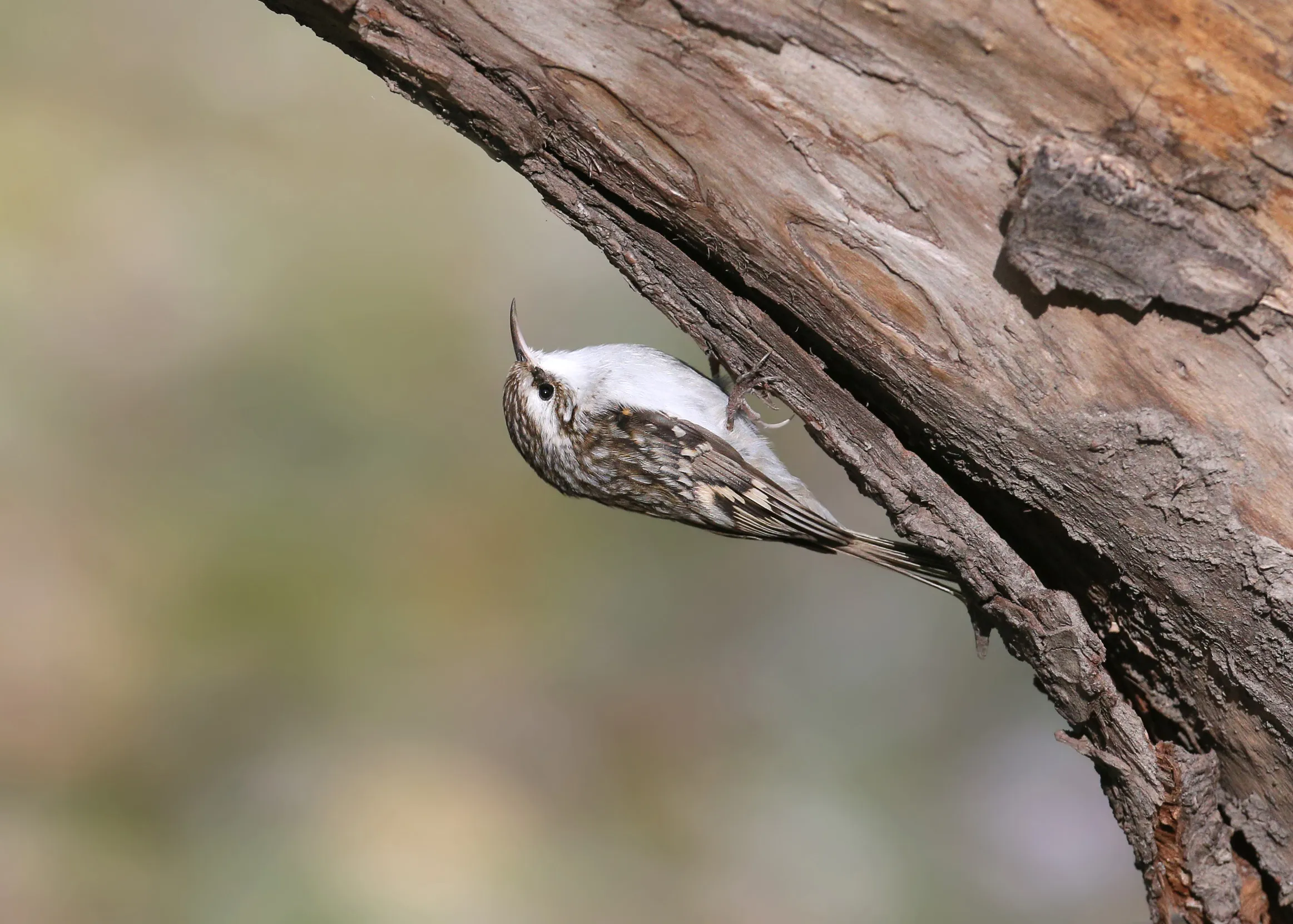
A flashier woodland character to look out for is the Great Spotted Woodpecker. At this time of year, listen out for a distinctive ‘drrrrrr’ as the birds drum on the bark of trees. Both males and females drum as a way of communicating to each other and to mark out their territories. It’s not, as you might expect, to drill a nest hole or to winkle out grubs to eat. Great Spotted Woodpeckers favour hard, dead trees as these ring with a sound that carries furthest. They’ve also been known to drum on telegraph poles and even drainpipes.
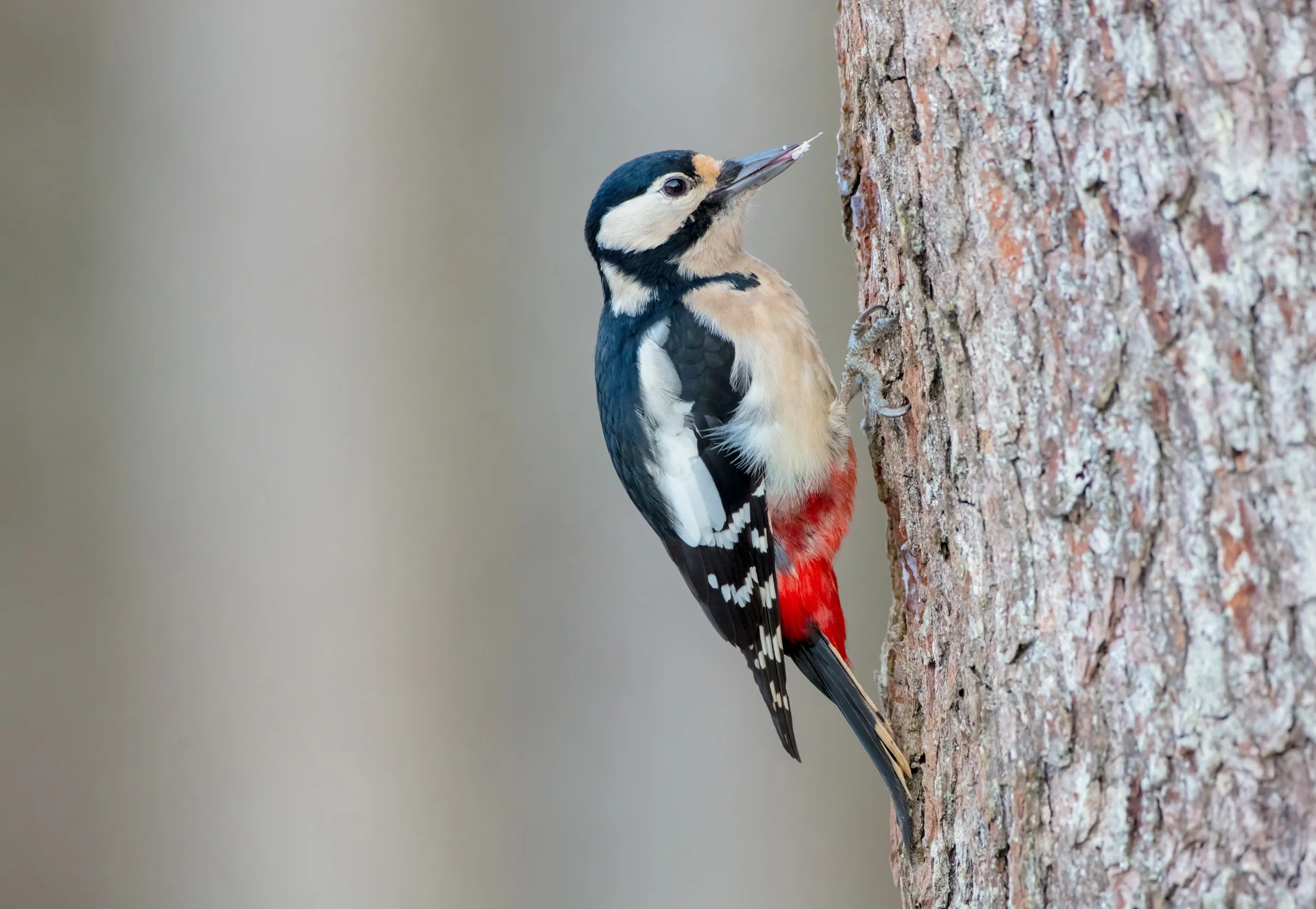
Robins are one of only a few birds in the UK that sing throughout the year. Take a walk in the countryside, head to your local park or into your garden and see if you can hear one. Fluffed up against the cold and singing its heart out, a Robin can raise a smile on even the darkest of winter days. But don’t be fooled by their cute and fluffy exterior. Robins are fiercely territorial and theirs is a song to warn other Robins away.

Redwings are a type of thrush that flock to the UK in winter from Iceland, Russia and Scandinavia. They come in search of berries to eat and to seek shelter in our relatively milder climate. They can be mistaken for Song Thrushes or Mistle Thrushes and will frequently form flocks with other thrushes as they roam through the countryside looking for food. But keep an eye out for the orangey-red tinge under their wings – it’s this that gives Redwings their name. This red colouring is visible both when the birds fly and when they perch.
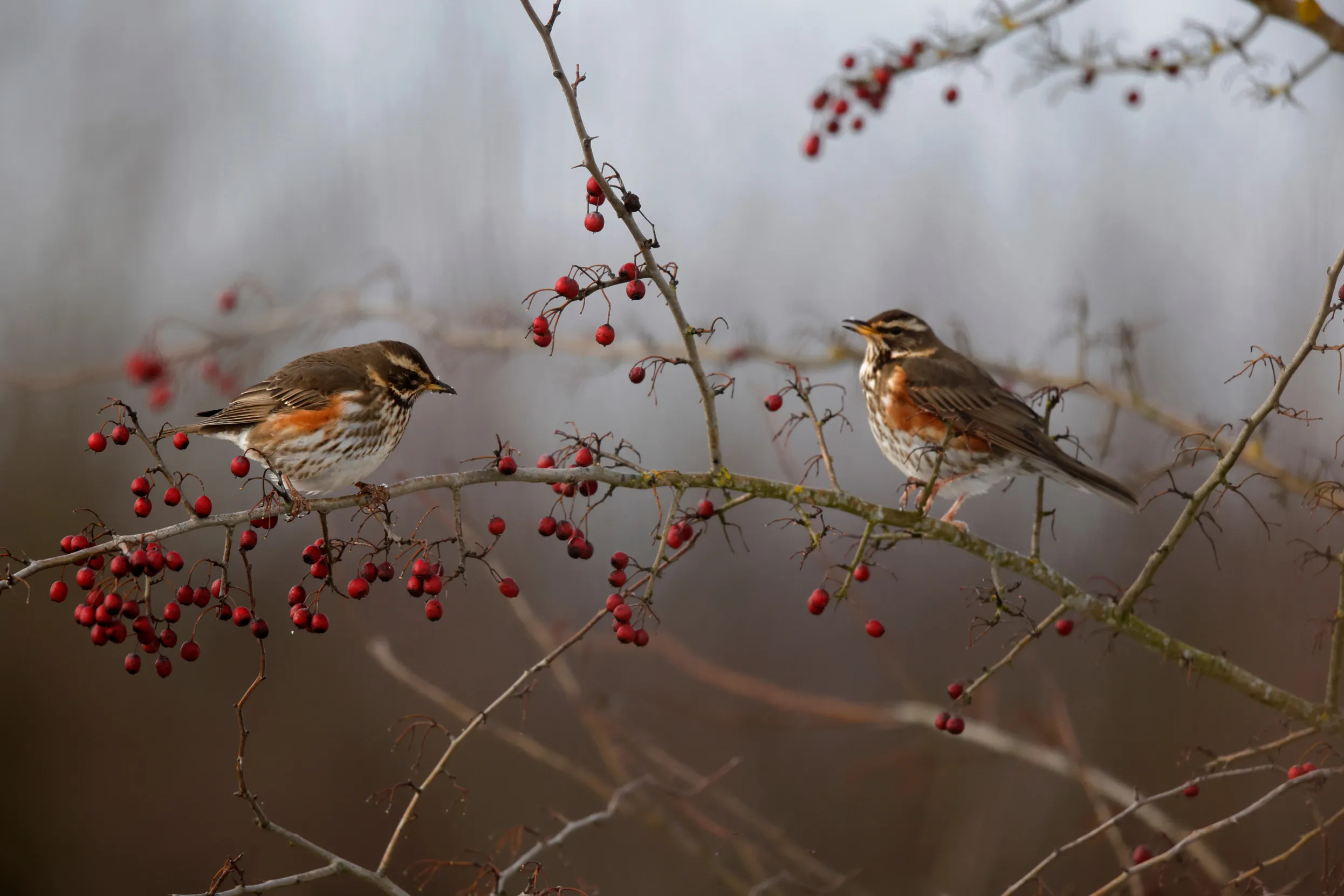
Another winter thrush to look for is the Fieldfare. This is the largest thrush seen in the UK and is distinguished from others by its grey head and yellow bill. Like Redwings, these birds are also seeking food and shelter in a warmer climate, flying in from Finland, Norway, Sweden, Russia and Eastern Europe to spend the winter here. They have a fast-paced ‘chack, chack, chack’ call which is likened to chuckling. Should cold weather persist and berries dwindle, Fieldfares may be tempted into gardens with pieces of apple and other fruit.
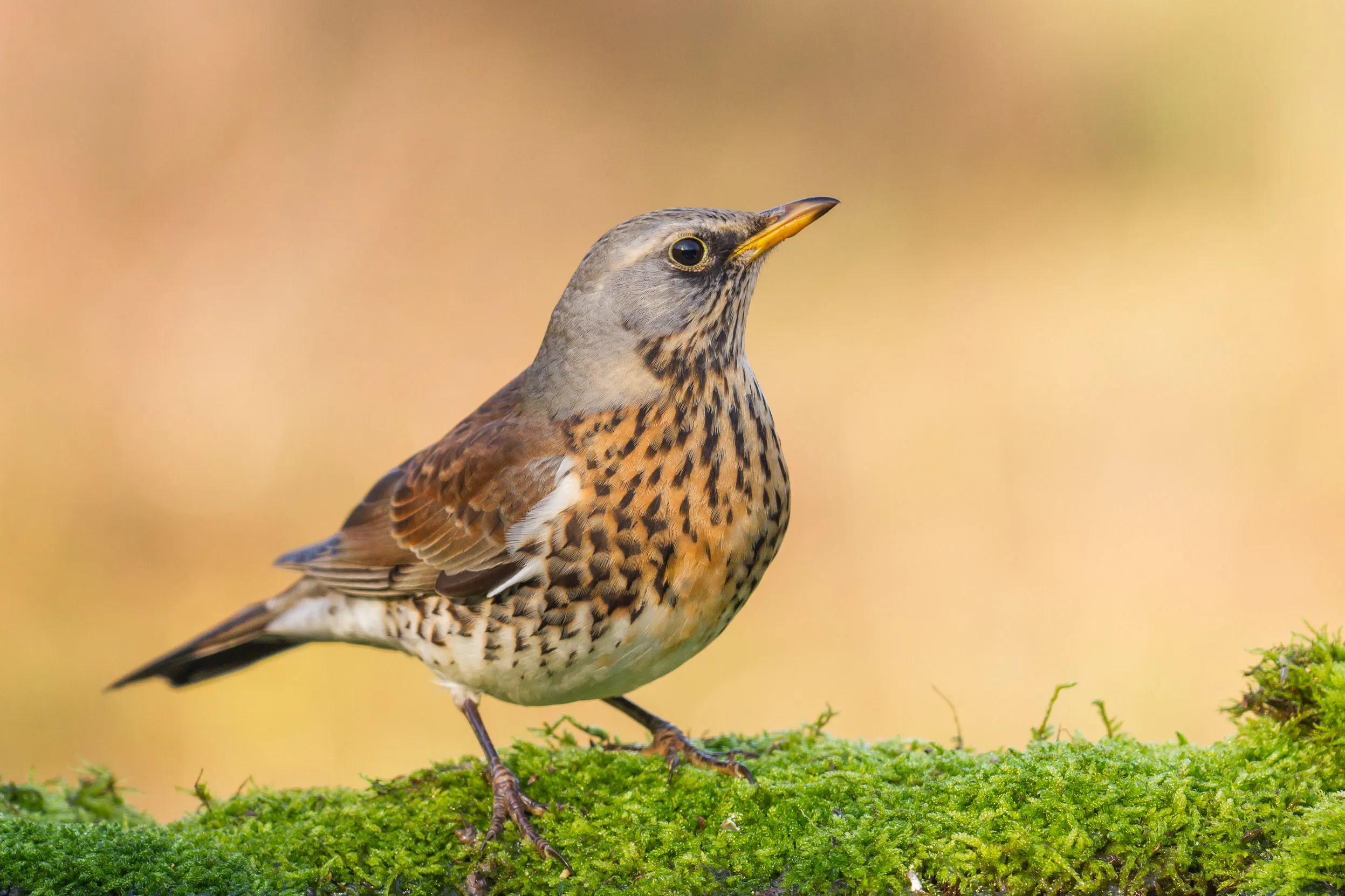
Red Squirrels are the UK’s native squirrel and were once found almost anywhere in the UK. Today, however, they are mainly restricted to Scotland and Ireland, with fragmented populations in parts of England and Wales. January is a good time to try and catch a glimpse of these special mammals as it is mating season and they can often be seen chasing each other through the trees. It’s also when their ear tufts are at their tuftiest!
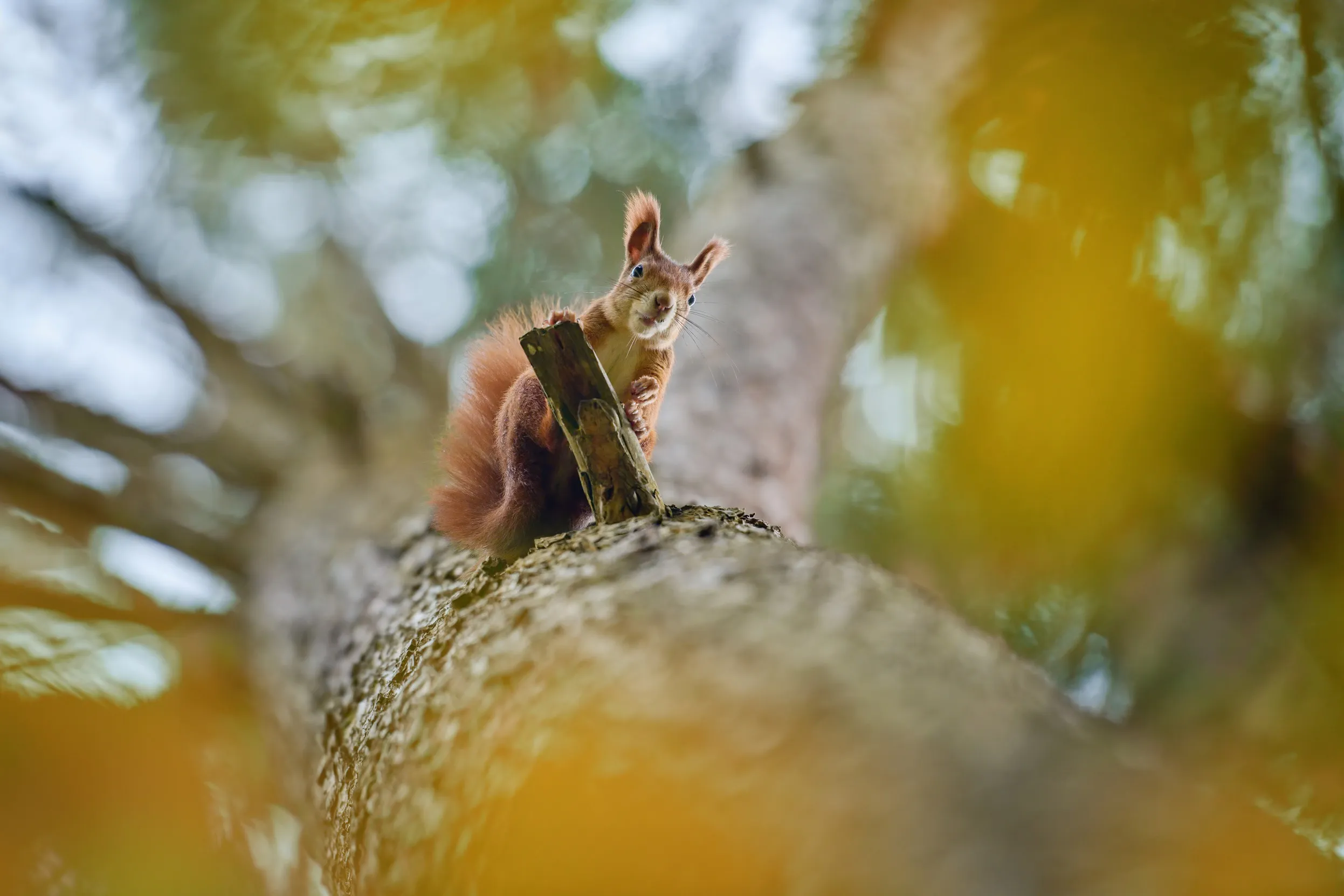
Red Squirrels are found on a number of RSPB nature reserves, making them even more worthy of a winter visit. At Haweswater in the Lake District, a landscape managed by the RSPB, we work in partnership with Wild Intrigue who run an exclusive Woodland Wildlife Hide. Here, you can book a photography session to capture images of these charismatic creatures in the ancient oak woodland of Naddle Forest.
This January, help us understand how garden birds are faring by taking part in the Big Garden Birdwatch between 26 and 28 January. Many of our nature reserves are holding special beginner birder events to help you get to know your garden birds, as well as opportunities to make bird feeders to attract the birds to your patch. You can also join Big Garden Birdwatch trails to test your knowledge and develop your ID skills.
